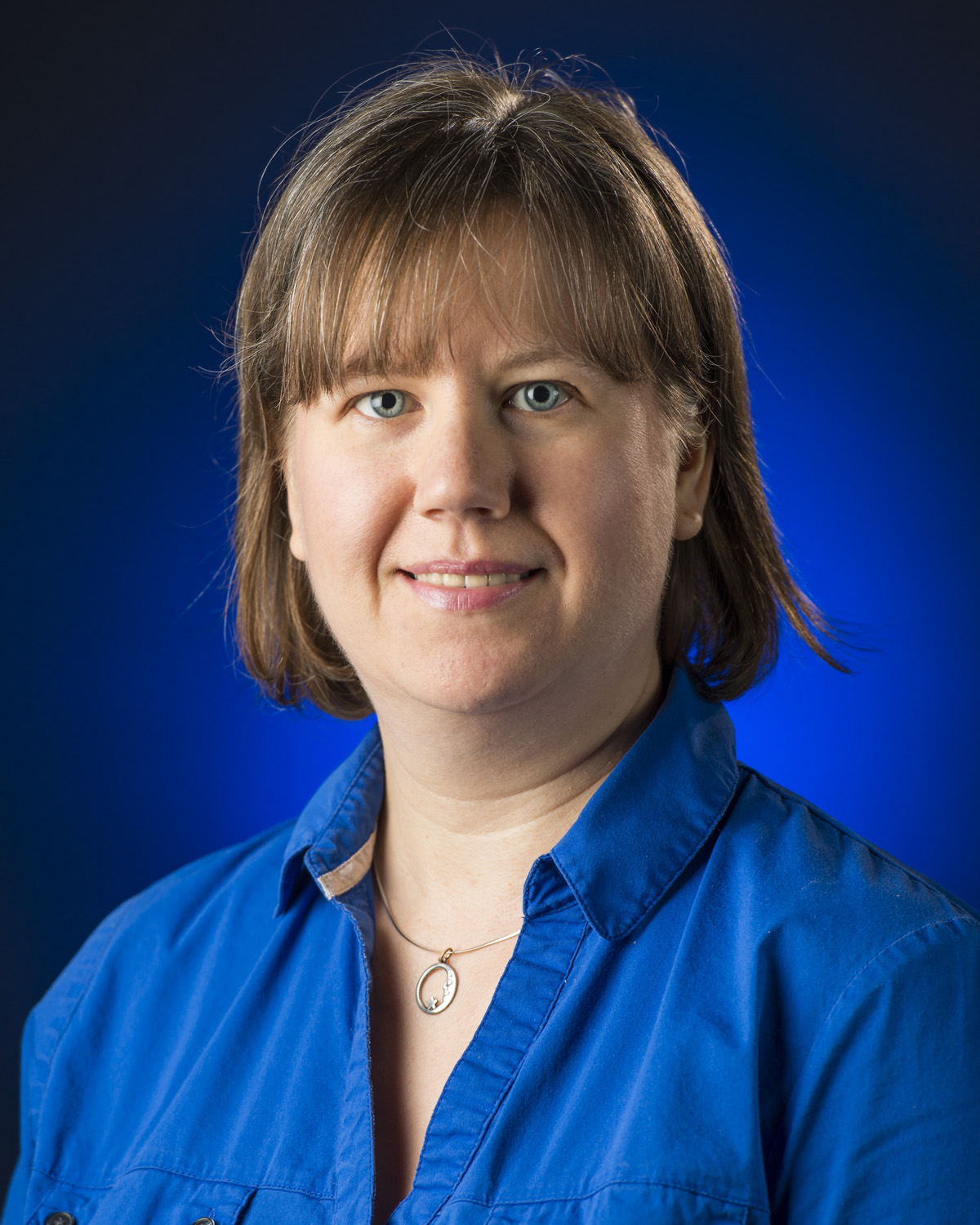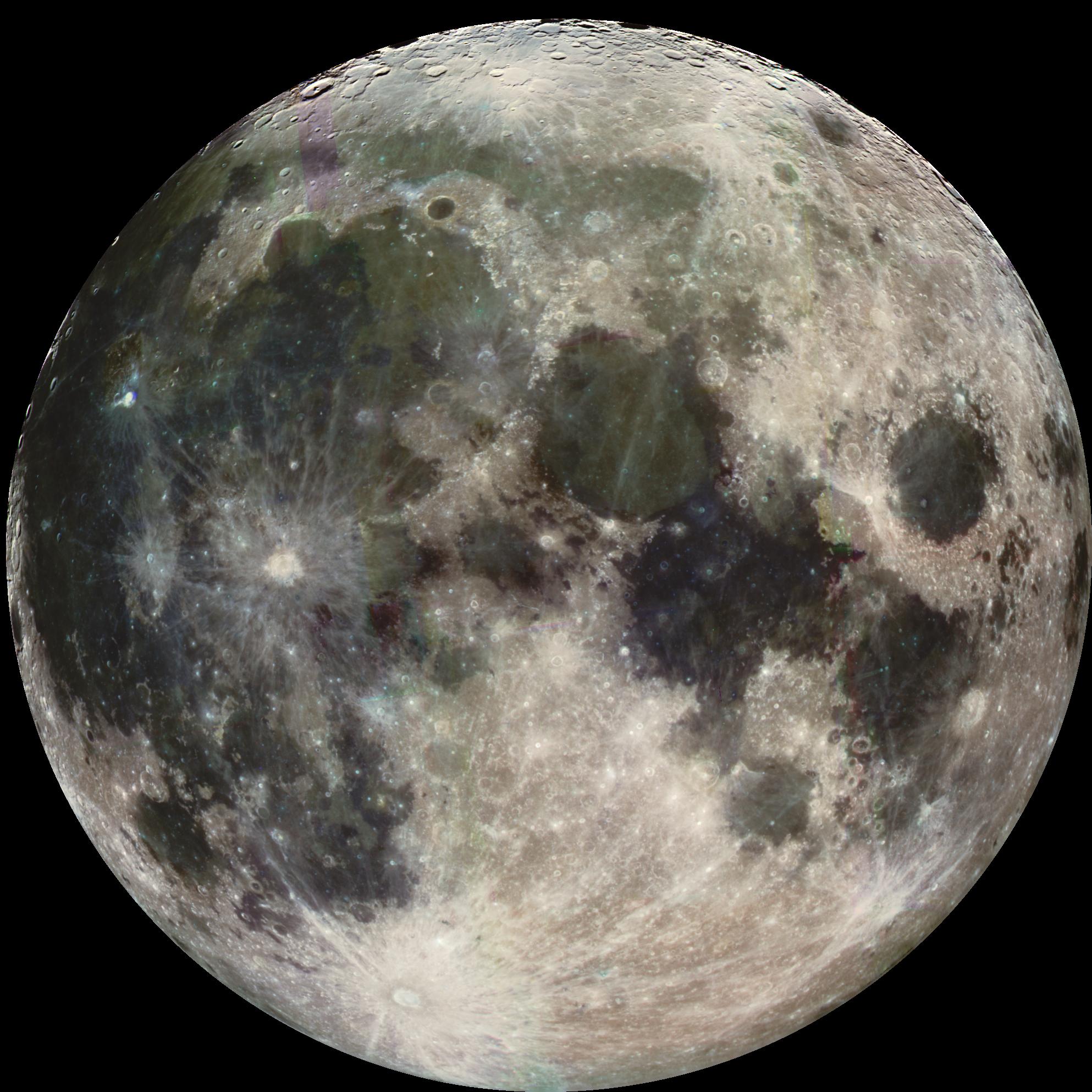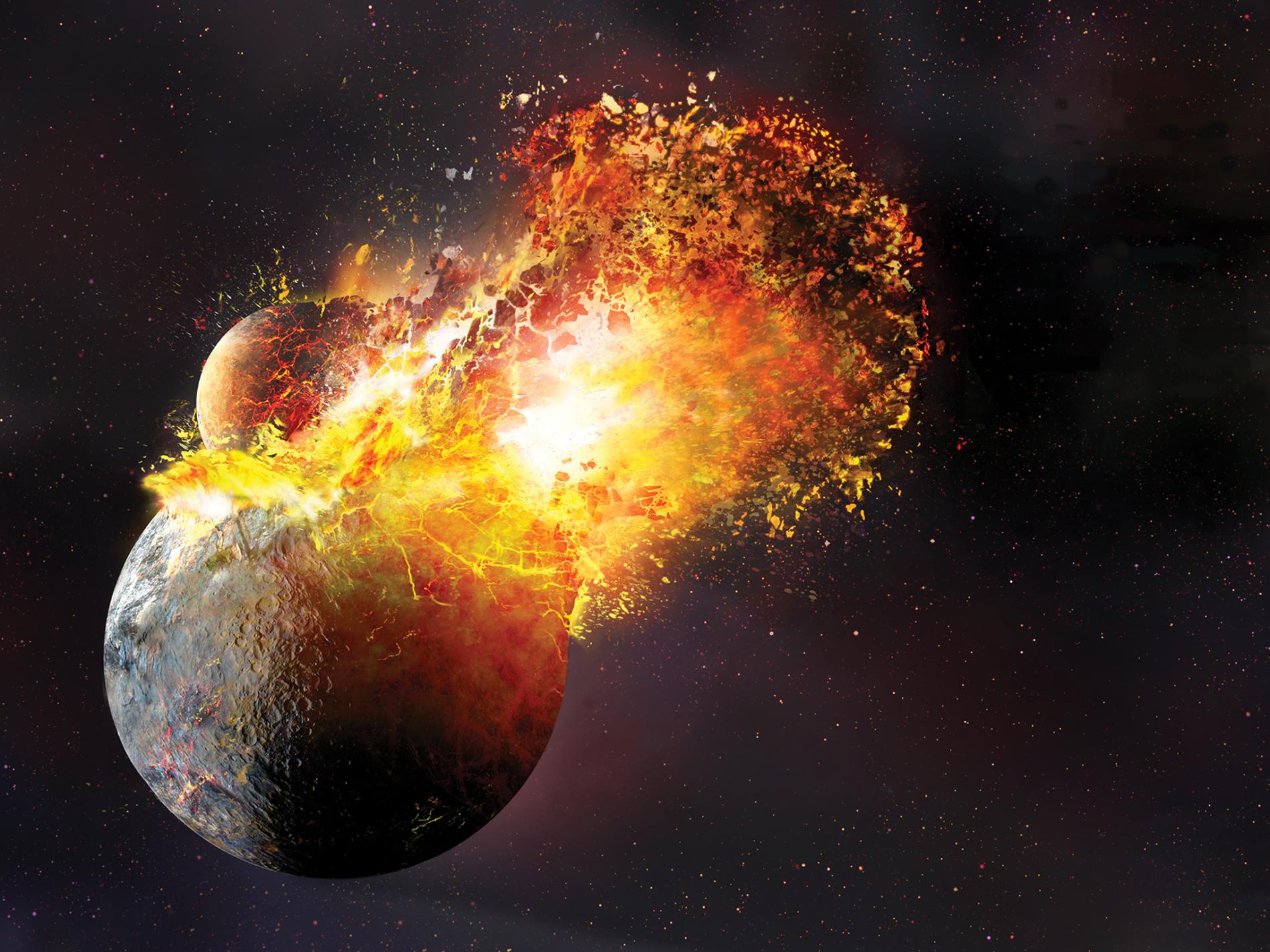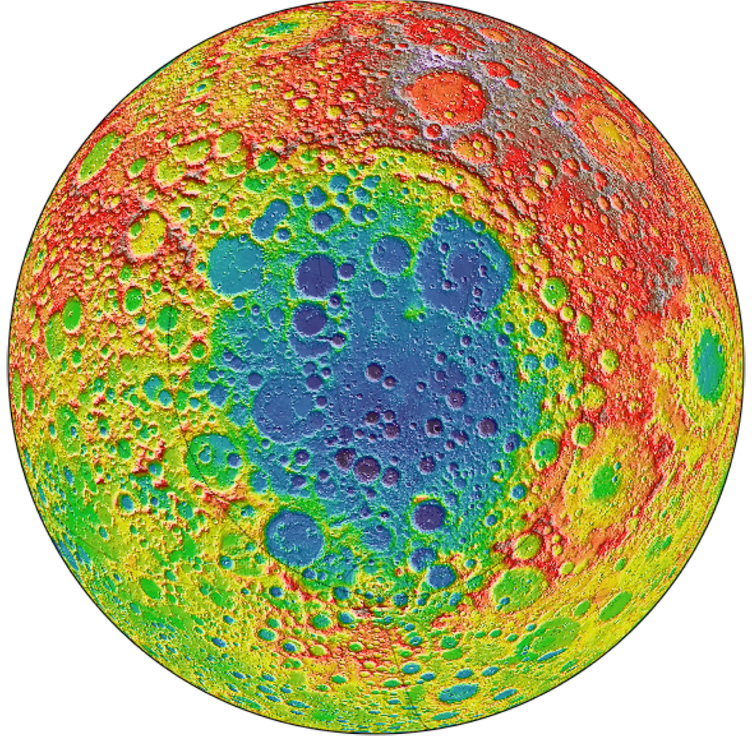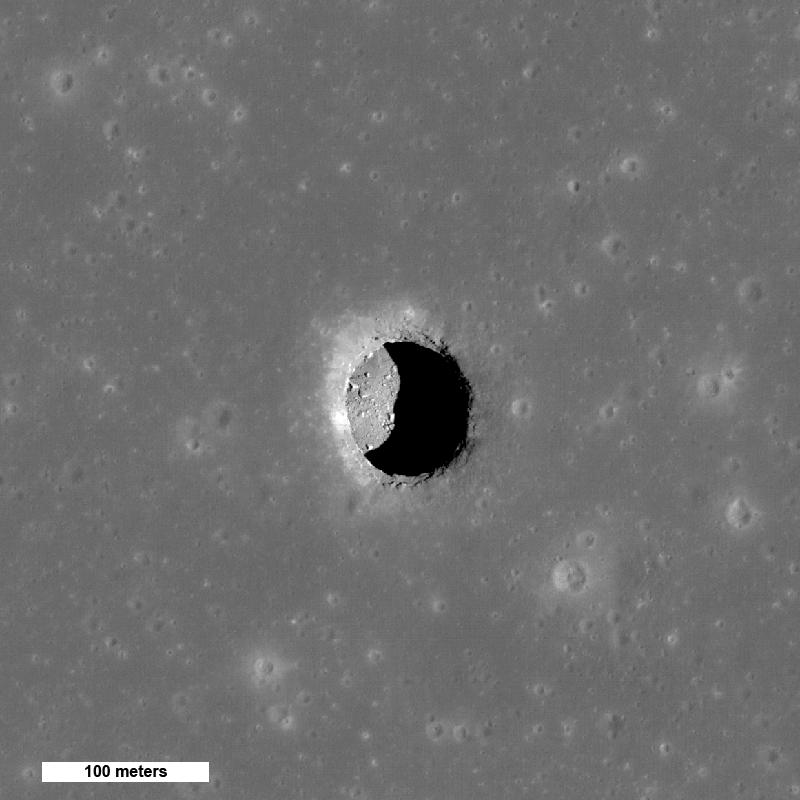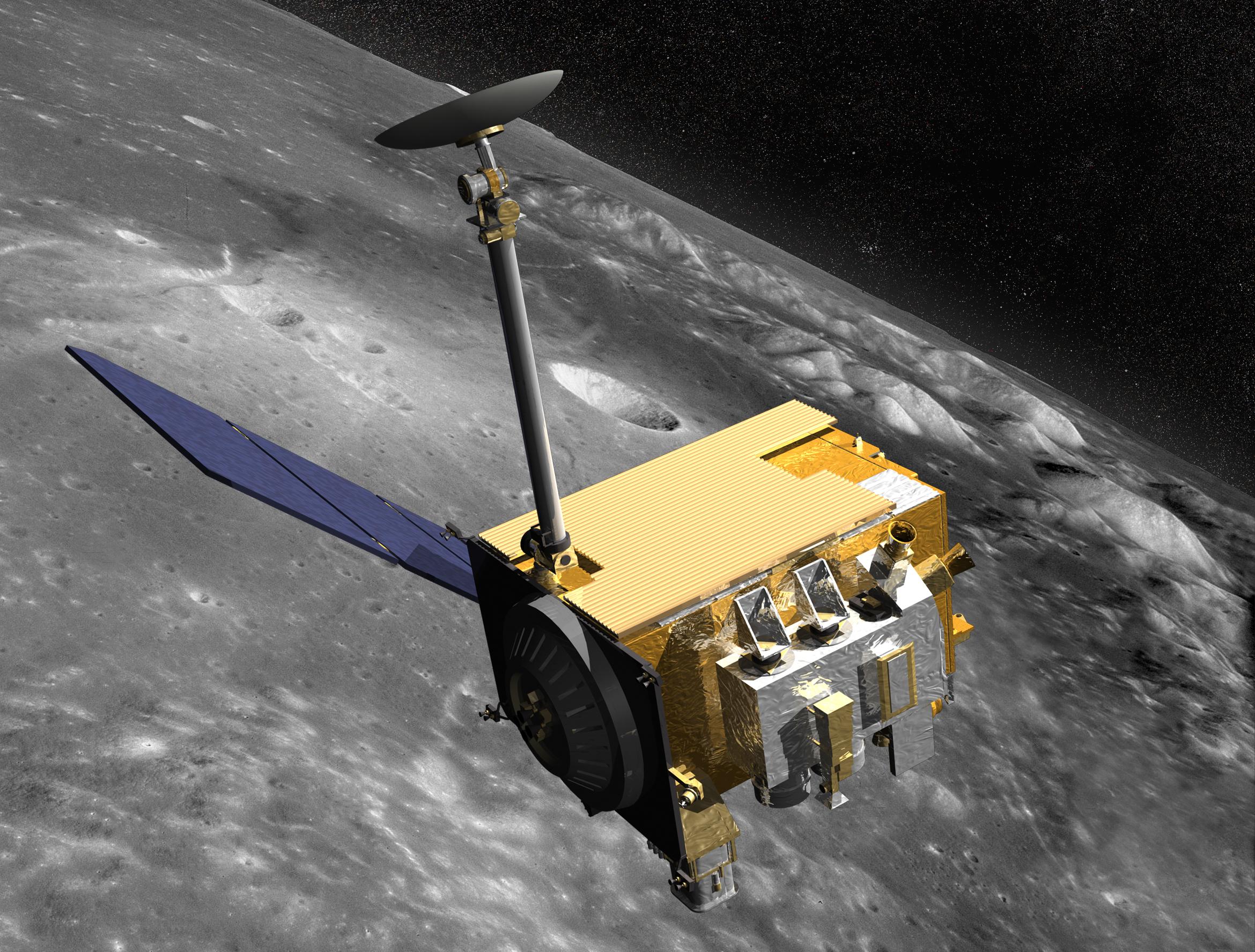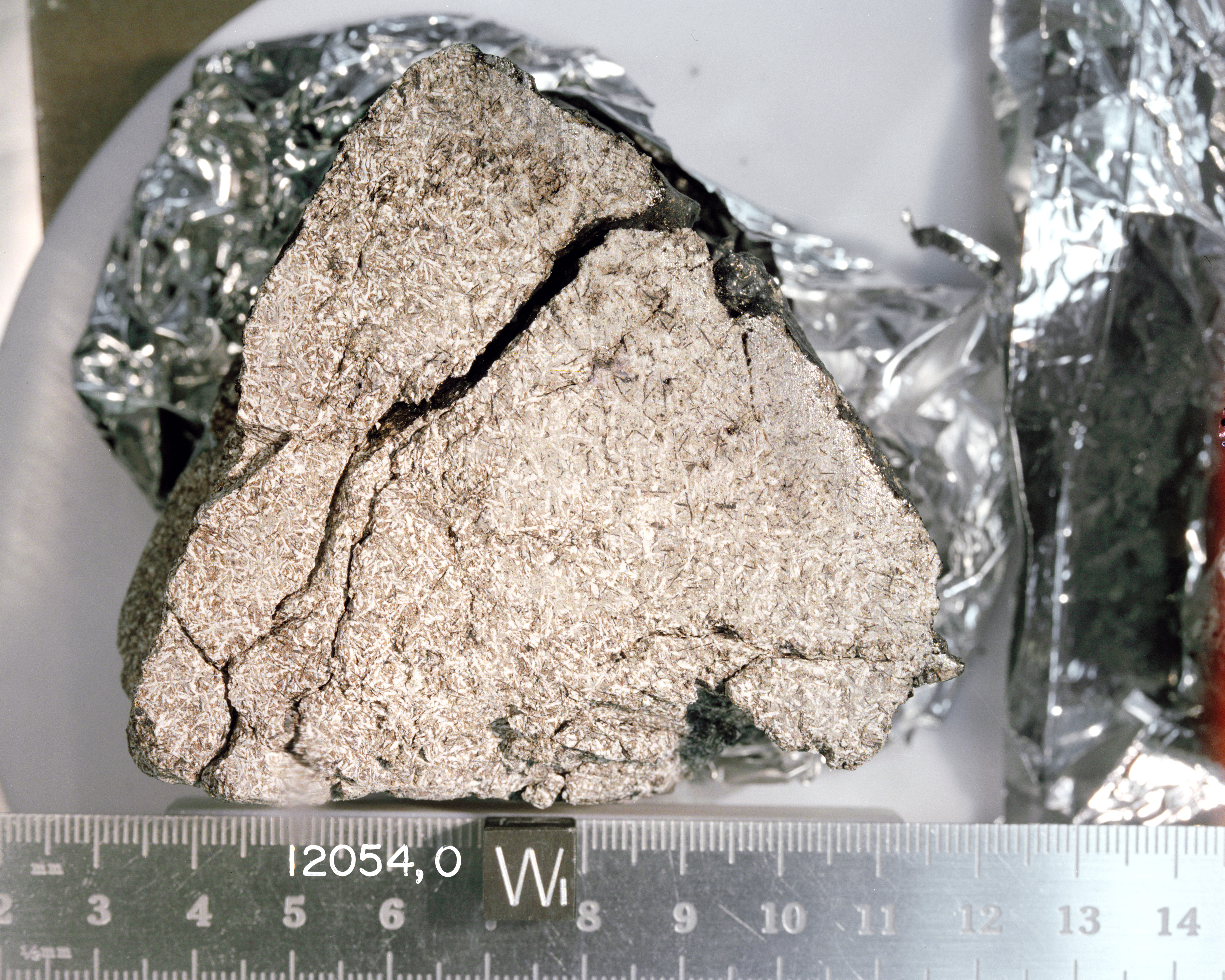Gravity Assist Podcast: The Moon, with Sarah Noble
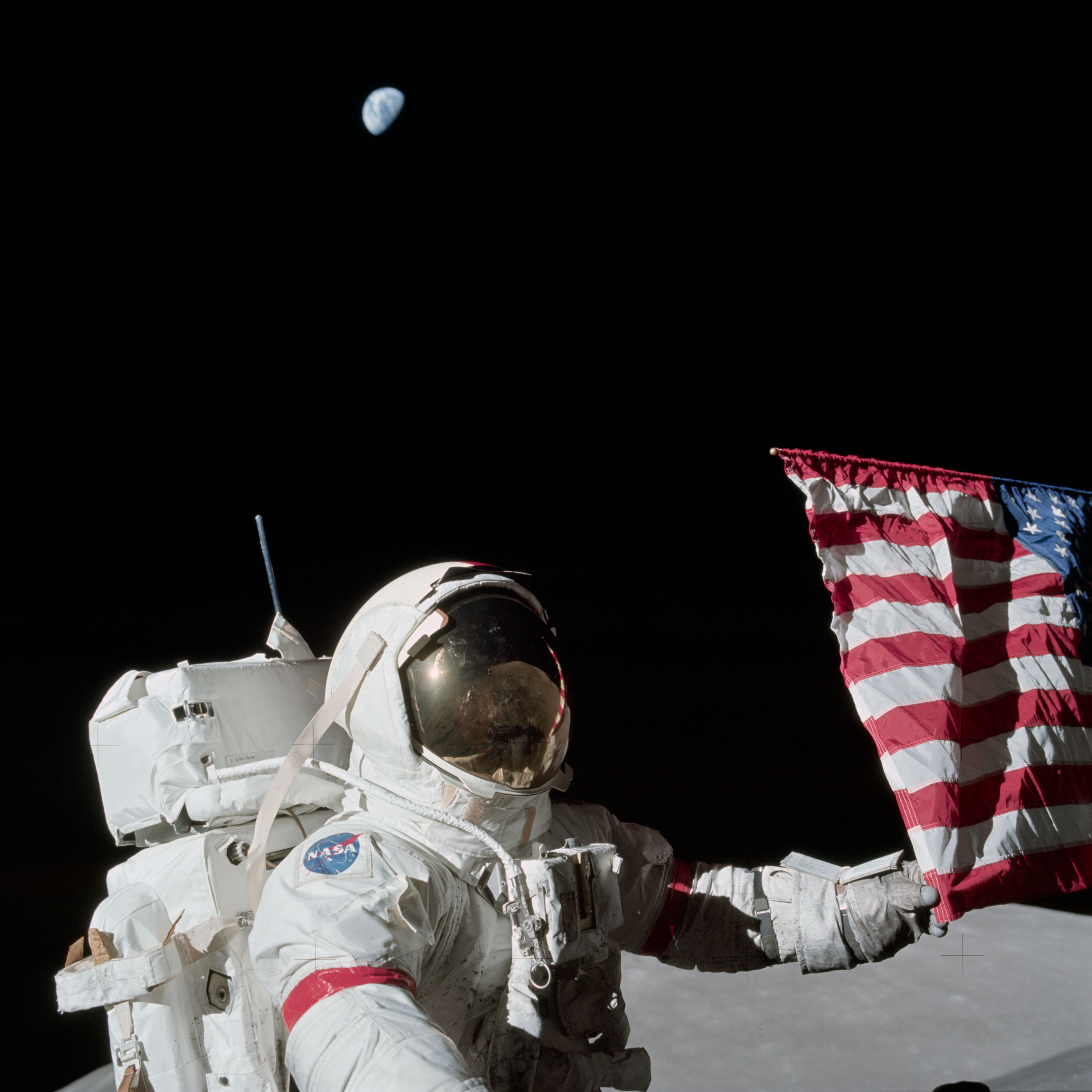
The Gravity Assist Podcast is hosted by NASA's Director of Planetary Science, Jim Green, who each week talks to some of the greatest planetary scientists on the planet, giving a guided tour through the Solar System and beyond in the process. This week, he is joined by lunar expert Sarah Noble to discuss how the Moon was formed, lava tubes and moonquakes, the "dark side of the Moon," and mysteries we have yet to solve about Earth's nearest neighbor.
You can listen to the full podcast here, or read the transcript below.
Jim Green: The Moon is a fabulous object in the sky that humans have always observed, and we've been studying it up close and personal for several decades. What do we really know about how it was formed? [The Apollo Moon Landings: How They Worked (Infographic)]
Sarah Noble: Our best understanding of how the Moon formed is that, early in the formation of the Solar System, a big planetesimal [an object formed from rock, dust or other materials]— something about the size of Mars — crashed into the Earth, and that spewed a lot of material off [Earth into space], which then came back together to form the Moon. So the Moon really formed very hot and very violently.
Jim Green: My understanding of the initial part of that theory is, as the Moon began to coalesce and come together, it actually was pretty close to the Earth.
Sarah Noble: Yeah, it was much closer than it is today. The Moon actually continues to move away from us at a rate of about four centimeters a year. So, back in those days, yes, the Moon was much closer and would have been much bigger and brighter in the sky.
Jim Green: The Moon also affects the Earth in terms of messing with our tides — tugs and pulls. So if it was so close to us, the tides must have been enormous.
Breaking space news, the latest updates on rocket launches, skywatching events and more!
Sarah Noble: Exactly, they would have been much bigger than we see today.
Jim Green: Another thing about the fact that the Moon is slowly moving away is that we live in a wonderful time where the Moon is just at the right distance to pass completely in front of the disk of the Sun during solar eclipses.
Sarah Noble: Yeah, it's perfect right now [but] there'll come a day when it will no longer cover up the Sun and we won't have total eclipses anymore.
Jim Green: One of the things we've tried to learn about the Moon since the Apollo days is more about its structure. What do we know about its structure today?
Sarah Noble: The Apollo missions actually left behind seismometers [and] for a while we had a seismic network on the Moon and measured a lot of moonquakes, [which are] the lunar equivalent of earthquakes. We understand that there are both shallow moonquakes and deep moonquakes, and this begins to help us understand what the internal structure of the Moon is. It turns out that the Moon actually has a core just like the Earth does.
Jim Green: Do we know if the core was ever liquid [i.e. molten]?
Sarah Noble: We don't know, but presumably it was when the Moon formed, and the heavy elements, the iron and nickel, [sank] to the bottom to form the core.
Jim Green: One of the things that we know about Earth's molten core is that it facilitates [an electric] current that runs around the Earth, which generates a magnetic field, which gives us a magnetosphere. Is there any indication that happened in the Moon, too?
Sarah Noble: The Moon doesn't have a magnetosphere. It does have local areas where there are magnetic fields, probably caused by very large impacts.
Jim Green: Those remnant fields that are trapped in the crust of the Moon really change the environment [around them]. What happens?
Sarah Noble: That's correct. They form something we call swirls, which are these really cool patterns of light and dark markings in sort of swirly patterns that we find in particular places on the Moon where we have this remnant magnetism.
Jim Green: As the Moon started to form, it was probably very volcanic. What do we know about how the Moon evolved over that period of time? Could it have had an atmosphere like the Earth?
Sarah Noble: There's actually some very exciting research that came out recently indicating that there were so many volcanoes about 3.5—3.8 billion years ago that [the Moon] might have had a temporary atmosphere, not like our atmosphere, but something more akin to Mars' atmosphere, sort of thin but enough to have wind even on the surface of the Moon This atmosphere would have been full of volatiles, including water. We think it's possibly one of the sources of the water [found] at the lunar poles.
Jim Green: If there was an atmosphere and some sort of [atmospheric] circulation, are there places on the Moon that we could actually go and make measurements that could tell us about that ancient atmosphere?
Sarah Noble: There are permanently-shadowed craters at the poles and we know that they have volatiles in them, including water. We have measurements from space, but we also have in situ measurements. We actually crashed a piece of a rocket into one of those areas and measured what came off [NASA's LCROSS mission]. It turns out that we know for sure that water is one of the things that is hidden in those poles. We don't know for sure what the source of that [water] is, but volcanism is one of the possibilities.
Jim Green: What is the concept behind permanently-shadowed craters? How can they be possible on the Moon?
Sarah Noble: Unlike the Earth, which is tilted in its orbit, the Moon is almost exactly straight up and down. [Sunlight can't reach] down into the bottoms of deep craters at the poles, so there are places that haven't seen sunlight for over a billion years.
Jim Green: That's absolutely fascinating. In fact, there's an indication from some missions that by looking at certain things, such as escaping neutrons, that there may be water trapped underneath the surface, and that indicates all kinds of different things about the evolution of the Moon's poles over time. What can you tell us about that?
Sarah Noble: It turns out that the permanently-shadowed regions don't match up perfectly with where we find evidence for volatiles, and if you work it backwards, it turns out that the actual pole of the Moon seems to have shifted so that it's in a different orientation now to what it was a couple billion years ago.
Jim Green: How could the Moon have shifted its pole after it started spinning?
Sarah Noble: You've maybe noticed that the Moon looks different on one side than the other, right? The side that faces the Earth has all these volcanic fields, all of this dark lava that has flowed out onto the Moon The other side does not. The two sides are different. They have different thicknesses in their crust, and they probably weren't always perfectly coordinated with one side toward us and the other. Over time, that has turned out to be the lowest energy position, and so the pole moved in order to get into the correct position.
Jim Green: One of the really fascinating areas on the Moon that we have discovered in the space age is on the far side. It's called the South Pole Aitken Basin. What is that, and what can it tell us about the Moon's evolution?
Sarah Noble: The South Pole Aitken Basin is one of the biggest impact [basins] that we have found in the Solar System. It's big enough that [the impact] actually probably cut all the way through the crust and down into the mantle of the Moon and probably, if it had been even a little bigger, it might have blown the Moon apart. So it gives us an opportunity, a place where we can see deep down into the Moon where we can't anywhere else. We are hoping one day to be able to go and take samples from there and see what those deep rocks look like.
Jim Green: The Earth has a core where most of the heavy elements like iron and nickel are found, and then the next major area is called the mantle, and then on top of the mantle is the crust. The mantle is under enormous amounts of pressure, which really changes the mineralogy of the rocks. We can't get to Earth's mantle, yet there might be mantle material on the backside of the Moon. From a planetary geologist's point of view, that's really spectacular.
Sarah Noble: Yeah, it's very exciting.
Jim Green: I recently heard about the discovery of large lava tubes and from my perspective, they're very fascinating — the tubes tell us about the past geology of the Moon but they also could be a future home for astronauts. What can you tell us about them?
Sarah Noble: Lava tubes are created when you have lava flowing and the top surface cools but the lava underneath it continues to flow. So you end up with basically a tunnel left over where the lava has flowed through. It turns out that these are places where we could actually consider putting people. They're protected from the space environment, which is very harsh and you have to worry about everything from radiation to micrometeorite impacts. If you put your people underground, they are much safer there, and so that's a very exciting thing. But [the lava tubes] also tell us about the Moon itself and what the lava was like and how it flowed. So we can learn about the geology of the Moon, as well.
Jim Green: What do you think we have yet to learn about the Moon? Do we know everything we need to know?
Sarah Noble: No, we certainly don't know everything we need to know. We've been to a few places on the Moon. It's like if you were visiting Earth and you went to Iowa and North Dakota and then said you were done — "oh, we've seen the whole planet, right?" and you haven't. The planet is big and the geology is varied. We know from remote sensing that there is geology on the Moon that we haven't gotten to yet. There are rock types on the Moon that didn't exist in the places where we went with Apollo that we haven't yet sampled. So there's still plenty we don't yet understand about the Moon.
Jim Green: One of our missions now, the Lunar Reconnaissance Orbiter, is still operating at the Moon, making spectacular measurements. What additional things is that telling us?
Sarah Noble: We've learned a lot. The Lunar Reconnaissance Orbiter has been up there now for many years and it has been giving us a fantastic record [of the lunar surface]. Some of the coolest things I think it has taught us is about are things currently happening on the Moon. We can actually see impacts. We have imaged the Moon many times now and we can find new impacts that weren't there the last time we went around. So we know they're brand new things that just hit the Moon. That's pretty exciting to be able to see the changes on the Moon in real time. And we can see down to incredible detail with these cameras. We can look at the Apollo landing sites and see the footprints that the astronauts left behind, which is just an amazing ability.
Jim Green: One of the ones I like are those of Apollo 17, where you can see the huge [areas] that they walked [across] and, of course, they had their neat little rover car, which is still on the Moon.
Sarah Noble: Yeah, you can actually see the flags. I like that. [At the] Apollo 11 [landing site], the flag got knocked over. But, [at the landing sites of] many of the other missions, you can actually still see the flags and the shadow that the flags are making on the ground.
Jim Green: It got knocked over because it was too close to the LAM, the Lunar Ascent Module, and the rockets blew it over.
Sarah Noble: After that, we learned to put [the flag] a little further away.
Jim Green: From Earth we see the Moon, but we only see one side of the Moon. No matter where you are on Earth and during the whole month that it takes for it to go around the Earth, we only see one side. Many people think that the back side of the Moon is the dark side of the Moon. How can we explain that better?
Sarah Noble: The back side of the Moon gets the exact same amount of sunlight as the near side of the Moon. As it's traveling around the Earth, it is also seeing the Sun. Just like we have day and night on the Earth, the Moon has day and night, as well, although the Moon's day is two weeks long, as is its night as it travels around.
Jim Green: When I was young what I really enjoyed when watching the video footage of the astronauts as they walked around the Moon is they were bouncing up and down and they were really kicking up the dust. What's that all about?
Sarah Noble: Because the Moon is smaller than Earth, it has less gravity. It has about one-sixth the gravity that we have on Earth, so you'd weigh about one-sixth as much. And so, even though their spacesuits are actually big and heavy, the astronauts still weigh a lot less. So it's pretty easy to bounce. It is a little tricky to walk, though, and it takes some time and effort to learn to get your Moon legs and figure out how to walk. If you watch the astronauts, particularly early in their missions, they're stumbling around a lot. They took a lot of falls. It was not super easy. The [Apollo-era] suits didn't help, either, since they didn't have a center joint, so the astronauts could not bend forward, which made it very difficult to lean over and pick up rocks.
Jim Green: The Apollo astronauts brought back rocks from the Moon and other things like regolith [surface material]. Where do we store that material and what are we learning from it, and are those lunar samples still useful today?
Sarah Noble: Absolutely. The rocks are mostly kept in Houston. There's a small percentage of them that we keep in a separate place in order to make sure that, if Houston [suffered] some sort of catastrophic loss, we would not lose all the rocks. They are stored in nitrogen. Most of the rocks have never been exposed to the Earth's atmosphere to keep them clean and free of contamination. But, we do actually lend them out to researchers across the country and across the globe. Anybody who has a good idea can apply and ask to have some small bits of rocks to look at. This is actually what I did for my Ph.D. thesis, to look at Apollo samples to try to understand the effects of the space environment on the rocks and soils on the Moon. But we use them for all sorts of things. There are plenty of people still doing research on those rocks today. In fact, some of the big discoveries we've made about the Moon in the last decade have come from those samples. Even though we've had them now for 40-plus years, we have better equipment now, we have more detailed measurement techniques, so we're still finding new things. For example, we found out a years ago that there's water in lunar samples. We thought for years, because of the violent way that the Moon was created, that the Moon was bone dry and that there was no water left in those rocks. Now that we have the ability to sample at higher precision we found that, in fact, a lot of the Moon rocks still do have water in them.
Jim Green: There was another mission called Chandrayaan-1. It was launched by the Indian Space Research Organization and NASA had an instrument on it, and that instrument looked at the mineralogy and therefore gave us an indication of water on the Moon. We found that the Moon had quite a variation in it. What was that variation all about?
Sarah Noble: Yeah, that's yet a different kind of water on the Moon. We've talked about water at the poles, water in the rocks, and then there's this third kind of water that the Chandrayaan M-cubed (or M3, for "Moon Mineralogy Mapper") instrument found, which is sort of ephemeral water that shows up on the surface of rocks — I want to say dew, but that's a terrible way to think of it because it's far less water than you would have in dew. It's a small amount of water that is created during interactions with the solar wind and it sits on the surface of the Moon in certain places.
Jim Green: The impacts on the Moon are just everywhere, and as you point out, there are still impacts going on today on the Moon, and we see them. What does this tell us about the environment around the Earth?
Sarah Noble: For everything that hits the Moon, things are hitting the Earth, too, as a matter of fact. We have an atmosphere, so small things get filtered out and burn up in our atmosphere. On the Moon, everything that comes through hits the surface, down things that are microscopic. Bigger things hit too, and they hit with some frequency, as we've seen from the Lunar Reconnaissance Orbiter. Fortunately, most of the Earth is ocean, and even of the part that's land, most of it is uninhabited. So we actually don't hear about all of the things that hit, but they are hitting regularly.
Jim Green: Those things that hit the Moon, the asteroids and meteoric material, bust things up and produce some of the regolith (surface material) we talk about, and that's called the gardening process. What do we know about that?
Sarah Noble: As the Moon has no atmosphere to protect the surface, it is constantly being hit by things and [these impacts are] what form the dirt on the Moon, as opposed to on the Earth or Mars where there is wind and water and other things that are breaking things down. On the Moon, it's almost entirely impacts. It is just billions and billions of years of impacts over and over again that turn over that soil and make it active.
Jim Green: The Apollo program brought back some of that regolith. What were some of the surprises that we found when we looked at it?
Sarah Noble: It turns out most of that soil is glass. Every time one of these tiny little things comes in and hits, it melts a very tiny amount of material. It turns out that 50, 60 percent of lunar soil is actually [made of] little tiny shards of glass, which is interesting. The astronauts found it actually very difficult to deal with because it's very sharp. They stick to everything, and they get caught in your clothes, and they get caught in your eyes, and it's not fun stuff to deal with.
Jim Green: In fact, one of the hazards of walking around on the Moon would be bringing those shards on your suit back into the habitat and then eventually breathing that and getting that in your lungs.
Sarah Noble: You have to make sure you engineer ways to prevent that sort of thing from happening.
Jim Green: One of the things I ask every one of my guests is what their Gravity Assist was. Sarah, what was the thing that happened to you that just propelled you into this field? What was your Gravity Assist?
Sarah Noble: I was always a space nerd. I was into space from the time I was very young. I absolutely love space. I headed to college and I started off as an aerospace engineer for real because it was the only major that had the word space in it, although it took me about a year to figure out that I was not an engineer, I was not destined to be an engineer, it was not my thing. I wandered around for a while, and I stumbled into geology, and I fell in love with geology. I had fantastic professors at Minnesota who knew I loved space and who steered me into planetary geology, who made sure that there were speakers that came to talk about planetary geology. They made sure that, in my petrology class, they got the lunar thin section rocks brought in and they told me to go to all the labs. Don't just go to your section, Sarah. Go to all the labs. Spend as much time with the Moon rocks as you want. Apparently it worked, because here I am still in love with the Moon rocks.
Jim Green: That's fantastic. Another thing that you do, Sarah, that I dearly love, is your artwork; you are really quite a talented artist. How did you get involved in that, and what are the kind of things that you like to do?
Sarah Noble: Much like space, I have always been in love with art. I actually minored in art as an undergraduate and have tried to find ways to work that into my life ever since. I'm so inspired by the Moon. The Moon is a very frequent motif in my work, as are all the planets just because I think they're beautiful and amazing and I just want to share that with the world.
Jim Green: Thanks, Sarah. Join us next time as we continue our virtual tour of the Solar System. I'm Jim Green, and this is your Gravity Assist.
This story was provided by Astrobiology Magazine, a web-based publication sponsored by the NASA astrobiology program. This version of the story published on Space.com. Follow us @Spacedotcom, Facebook or Google+.

The National Aeronautics and Space Administration (NASA) is the U.S. government agency in charge of the civilian space program as well as aeronautics and aerospace research. Founded in 1958, NASA is a civilian space agency aimed at exploring the universe with space telescopes, satellites, robotic spacecraft, astronauts and more. The space agency has 10 major centers based across the U.S. and launches robotic and crewed missions from the Kennedy Space Center in Cape Canaveral Florida. Its astronaut corps is based at the Johnson Space Center in Houston. To follow NASA's latest mission, follow the space agency on Twitter or any other social channel, visit: nasa.gov.

